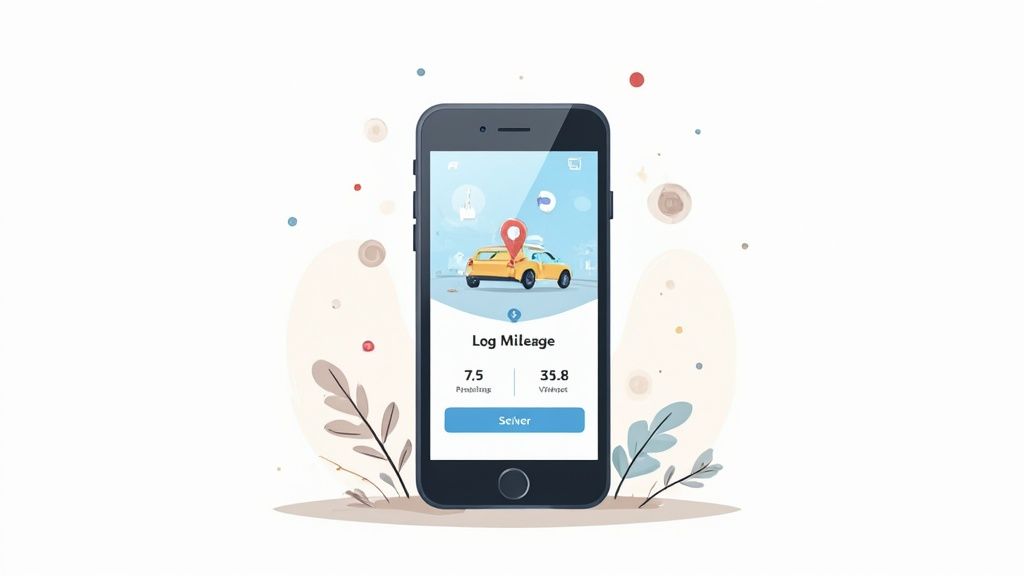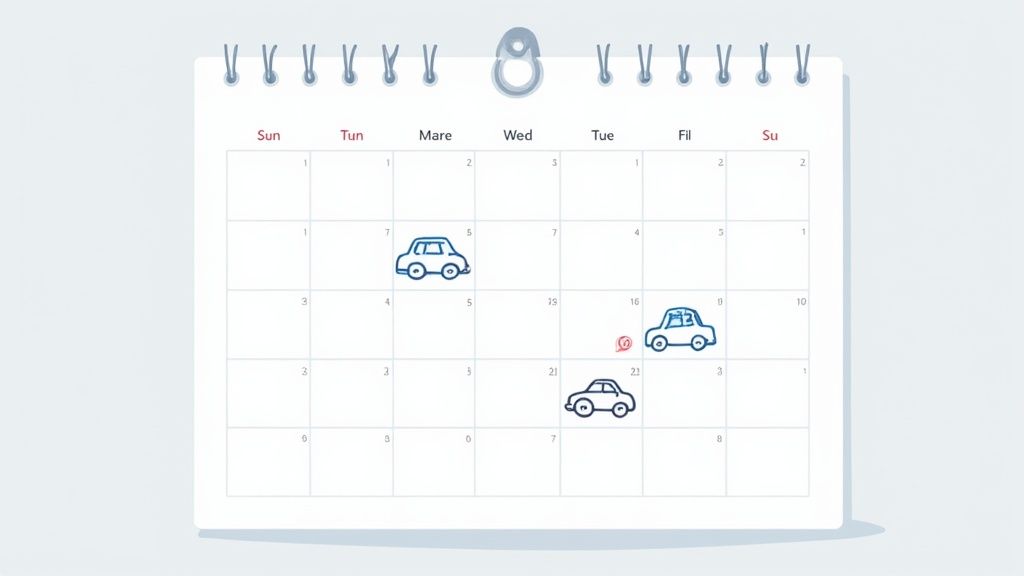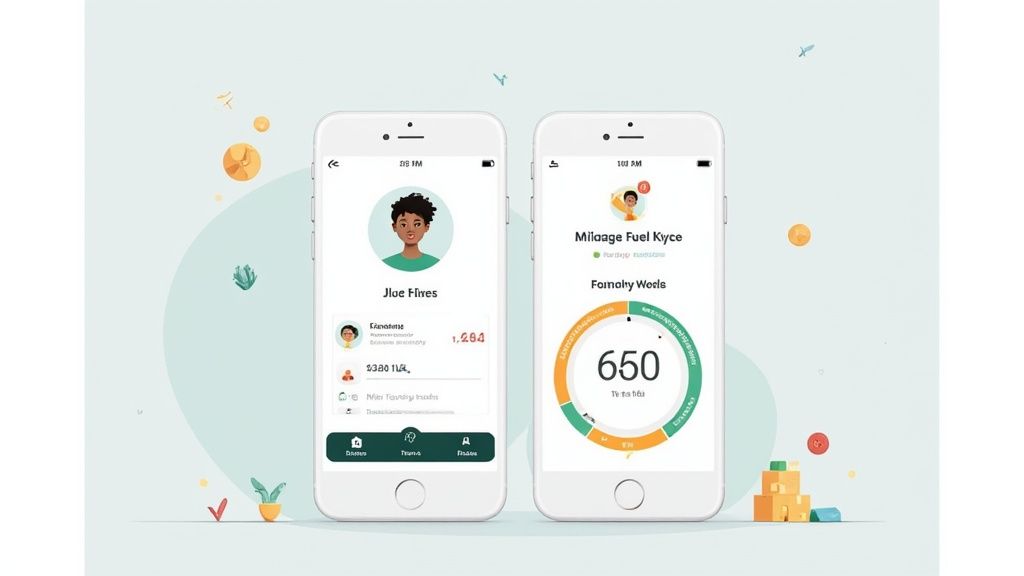
The Ultimate Guide to Finding the Best Log Mileage App: Smart Solutions for Business Success
How Business Travel Mileage Apps Are Modernizing Expense Management
Business travel expense management, especially mileage tracking, has long been a source of frustration for companies. Paper logs and manual spreadsheets are not only time-consuming but often lead to errors and missing information. Fortunately, modern mileage tracking apps offer a practical solution that helps businesses move beyond outdated methods. More companies are discovering that digital mileage tracking delivers concrete benefits for efficiency, compliance, and cost savings.
How Digital Tracking Creates Real Efficiency Gains
Mileage tracking apps take the work out of logging business travel by automatically recording trip details. Take MileIQ, which captures mileage data in the background while employees focus on their actual work. This automation saves significant time compared to manual logging. The digital approach also improves accuracy since there’s no risk of forgotten trips or calculation mistakes. With reliable tracking in place, finance teams spend less time reviewing and correcting expense reports.
Meeting IRS Requirements with Confidence
Proper mileage documentation is essential for both expense reimbursement and tax compliance. Modern tracking apps simplify this by automatically collecting all IRS-required details like dates, distances, and business purposes. Many apps also integrate GPS data to provide a clear record of business travel. This level of documentation gives companies peace of mind during audits, which is especially valuable in regulated industries where meticulous recordkeeping matters most.
The Bottom Line Impact of Better Tracking
The switch to automated mileage tracking delivers measurable cost benefits. Companies report thousands in annual savings from reduced administrative work, more accurate reimbursements, and properly documented tax deductions. For example, sales teams that drive frequently to client meetings can now capture every business mile with precision. Some apps even help optimize routes and monitor fuel usage to find additional savings. The result is both immediate cost reduction and long-term ROI improvement.
Digital mileage tracking represents a practical way for companies to improve their travel expense processes while strengthening financial controls. The technology makes it easier to track, document, and manage business mileage - creating efficiencies that benefit both employees and the bottom line. In the next section, we’ll look at specific IRS mileage log requirements and how these apps help ensure compliance.
Navigating IRS Requirements with Confidence

Keeping detailed mileage records isn’t just good practice - it’s essential for tax deductions and IRS compliance. A good mileage tracking app makes this process simpler by providing the tools you need to meet IRS requirements while maximizing your potential deductions. Let’s explore exactly what the IRS expects and how to meet those expectations effectively.
Understanding IRS Mileage Log Requirements
Think of your mileage log as a detailed receipt for every business mile driven. The IRS requires specific information to support your deductions, including:
- Date of Trip: When the business travel took place
- Odometer Readings (Starting and Ending): These readings show the exact mileage for each trip
- Total Miles Driven: The complete distance covered during business trips
- Purpose of Trip: A clear business reason, such as “Client meeting at ABC Corp” or “Supply delivery to Main St. location”
- Destination: The specific location of your business activity
While tracking these details for every trip might seem like a lot of work, mileage tracking apps make it simple. Instead of manual recording and potential mistakes, you’ll have an organized, IRS-ready log available whenever you need it.
How Log Mileage Apps Ensure Compliance
Think of a mileage tracking app as your personal record-keeper. It automatically captures required data and organizes it into clear reports. Features like automatic trip detection and GPS tracking turn what used to be a time-consuming task into an effortless process. For example, most apps let you sort trips into business or personal categories with a quick swipe, creating a precise, audit-ready record.
These apps also store your data in the cloud, making it accessible anytime and anywhere. This becomes especially valuable during an audit, when having well-organized records readily available can make the process much smoother.
Avoiding Common Compliance Pitfalls
Even with a mileage tracking app, certain mistakes can create compliance issues. Here are the main problems to watch out for and how your app can help prevent them:
- Inconsistent Tracking: Missing trips or spotty records raise red flags with auditors. Apps with automatic trip detection ensure complete, consistent records.
- Lack of Trip Detail: General descriptions like “business meeting” aren’t enough. Use your app’s note features to record specific details for each trip.
- Missing Odometer Readings: The IRS requires these numbers to verify mileage. Mileage tracking apps record this automatically, so you won’t miss this crucial information.
By understanding what the IRS requires and using your mileage tracking app effectively, you can build a solid, audit-ready mileage log. This not only helps maximize your deductions but also gives you confidence that your records will stand up to scrutiny, letting you focus on running your business.
Choosing Your Perfect Mileage Tracking Solution
When you understand the IRS requirements and benefits of digital mileage logs, you can focus on selecting the right tracking app for your needs. Since there are many options available, it helps to focus on the practical aspects that matter most - like accuracy, battery life, user experience, and productivity features - rather than just marketing claims.
Key Features to Consider in a Log Mileage App
The ideal mileage tracking solution should align with your specific requirements, whether you’re an individual or business user. Here are the essential features to evaluate:
- Automatic Mileage Tracking: Skip manual entry with automatic trip detection. For example, MileIQ has recorded over 80 billion miles through automated tracking.
- GPS Verification: Built-in GPS tracking provides precise location data that meets IRS documentation requirements.
- Trip Categorization: Quickly classify trips as business or personal with simple swipes or tags to keep records organized.
- Report Generation: Get IRS-compliant reports ready for tax time and potential audits.
- Cloud Storage: Access your mileage logs securely from any device with cloud backup.
- Battery Efficiency: The app should minimize battery drain during tracking. For instance, QuickBooks Self-Employed is known for efficient battery usage.
- User-Friendly Interface: An intuitive design makes daily tracking feel effortless.
Evaluating Your Options: A Practical Framework
To find the right mileage app among many choices, follow this straightforward evaluation process:
- Identify Your Needs: Are you a freelancer, small business owner, or fleet manager? Define your key requirements.
- Research and Compare: Look at features, pricing, and actual user experiences to understand how apps perform in real use.
- Test Drive: Use free trials to experience the interface, accuracy, and battery impact firsthand.
- Consider Integration: Check if the app works with your existing accounting or expense tracking tools to reduce manual work.
- Prioritize Accuracy: Focus on apps with reliable GPS tracking and proven accuracy, since this directly impacts your tax deductions.
Making the Right Choice for Long-Term Success
Picking the right mileage tracking app is an investment in your business efficiency and tax compliance. Taking time to evaluate options based on your specific needs helps you choose a solution that makes tracking easy and maximizes your deductions. Moving from manual logs to a dedicated app is like upgrading from paper records to digital - it’s a practical step toward smarter business practices that save time and reduce stress around tax season.
Maximizing Tax Benefits Through Strategic Tracking

Getting the most out of business mileage tax deductions requires careful attention to IRS requirements. A good mileage tracking app does more than just help you stay compliant - it gives you tools to make smarter decisions about your business travel expenses. Let’s explore how to use these apps strategically to maximize your tax benefits.
Advanced Techniques for Trip Categorization
The key to claiming all valid deductions is proper trip categorization. Rather than simply marking trips as “business” or “personal,” try breaking them down further by client, project, or specific activity type. For instance, you might separately track sales meetings, supply runs, and client visits. This detailed view helps you understand exactly where your travel costs come from. With this information, you can make better choices about route planning and which client visits deserve priority.
Optimizing Expense Allocation and Reporting
Good mileage tracking apps make tax time easier by generating clear, detailed reports. You can filter these reports by date, category, or vehicle to quickly find what you need. Need to see all trips for a specific client project last quarter? A few clicks will show you. Beyond simplifying tax preparation, these reports provide valuable insights for business planning. By reviewing your mileage data regularly, you can spot inefficient routes or find ways to combine trips and reduce costs.
Getting More Value from Your Data
Today’s mileage tracking apps often include helpful analysis tools. Many can identify patterns in your travel habits and suggest better routes. Some connect with fuel tracking to help you understand the full picture of your transportation costs. This turns your mileage log into a tool for smarter business decisions. For example, you might discover through data analysis that certain client meetings require too much travel time. You could then explore alternatives like video calls to maintain relationships while reducing expenses. Using your mileage app strategically this way helps you both satisfy tax requirements and find opportunities to improve your bottom line.
Implementing for Team-Wide Success
Getting your whole team to use a mileage tracking app takes more than just picking good software - it requires careful planning around people, processes and support. Studies show the potential impact: MileIQ users have logged over 80 billion miles and claimed over $10 billion in deductions, showing what’s possible with strong team adoption.
Change Management: Addressing Potential Resistance
When introducing a new mileage tracking system, some team members may be hesitant to move away from their familiar paper logs or spreadsheets. The key is clearly explaining how the app makes their work easier - from automatic trip tracking to simplified expense reports and bigger tax deductions. For best results, involve the team in choosing and implementing the app. This gives them ownership in the process and helps identify potential issues early. Regular check-ins and open communication channels make the transition much smoother.
Training: Ensuring Effective App Usage
Good training is essential for team success with any new app. Start with the basics like recording trips and generating reports, then move to advanced features like expense integrations. Hands-on practice sessions work best, supported by clear documentation that team members can reference later. The goal is getting everyone comfortable using all the app’s capabilities to maximize the benefits. Regular refresher training helps reinforce key workflows and introduce new features as they’re added.
Rollout and Ongoing Support: Key to Long-Term Adoption
Instead of switching everyone at once, start with a pilot group to test the app and work out any issues. This allows you to refine the training and support before rolling it out more widely. Make sure team members know exactly who to contact with questions. Some companies designate “app champions” in each department to provide day-to-day help. Regular check-ins to gather feedback help ensure the app continues meeting team needs over time.
Measuring Success: Tracking Key Metrics
Track specific metrics to evaluate how well the app implementation is working. Focus on active user numbers, time saved on expense reporting, mileage data accuracy, and increases in tax deductions claimed. This data shows the return on investment and highlights areas needing improvement. Regular metric reviews let you optimize the implementation approach and maximize value. The goal is steady improvement in adoption and effectiveness over time.
The Future of Intelligent Expense Management

As companies adopt digital tools for tracking business mileage, the technology keeps getting better and smarter. Understanding where mileage tracking apps are headed helps organizations make informed decisions about their expense management approach. By staying current with emerging capabilities, businesses can improve their operations while controlling costs.
AI-Powered Route Optimization and Predictive Analytics
The next generation of mileage tracking apps will do much more than just record distances. By incorporating artificial intelligence, these apps will suggest the most efficient routes while adapting to real-time traffic patterns. For example, a sales team member visiting multiple clients could receive an optimized schedule that minimizes drive time based on appointment locations and traffic conditions. The apps will also help companies plan ahead by forecasting travel costs more precisely - especially valuable for businesses with variable travel needs throughout the year.
Seamless Integration With Broader Business Systems
Future mileage tracking solutions will connect smoothly with other key business tools like accounting software and customer relationship management (CRM) platforms. This means trip data will automatically flow into expense reports without manual entry, saving time and reducing errors. When mileage tracking integrates with other systems, companies gain deeper insights into travel patterns and costs. Leaders can then make smarter decisions about resource allocation and travel policies based on comprehensive data.
Preparing for the Future of Mileage Tracking
Companies can take specific steps today to get ready for tomorrow’s mileage tracking capabilities:
- Embrace Cloud-Based Solutions: Using cloud-based apps ensures your team always has access to the latest features without needing to install updates manually.
- Prioritize Scalability: Select a mileage tracking solution that can expand along with your business growth in terms of team size, vehicle fleet, and operational needs.
- Invest in Training and Development: Help your team use mileage tracking tools effectively through regular training. This maximizes your technology investment while ensuring accurate data capture.
By understanding and preparing for advances in mileage tracking apps, organizations can build more efficient expense management processes. Just as paper logs gave way to digital tracking, today’s basic apps will evolve into smarter, more connected solutions. The question is: will your business be ready to take advantage of these improvements?
Ready to experience the future of mileage tracking? Auto Service Logger offers a comprehensive platform to manage vehicle maintenance records and track mileage with ease. Click here to explore Auto Service Logger today and discover how it can streamline your vehicle maintenance and mileage logging needs.